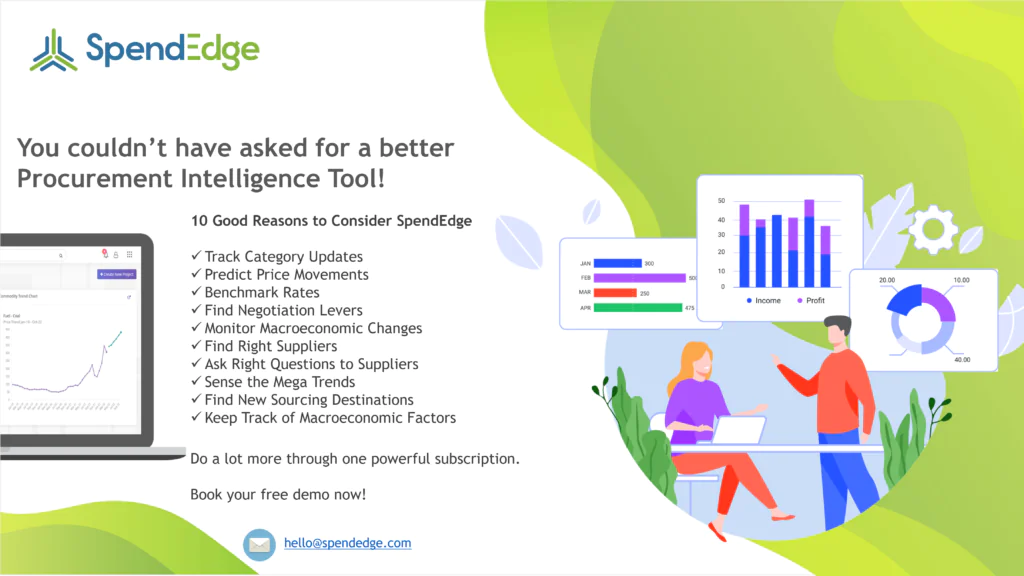By: Ankur Rishi
Of course, thinning out costs is among the top goals of the procurement function and procurement stakeholders. Procurement organizations typically put into service a handful of methods to optimize costs. These include negotiating more pocket-friendly deals with suppliers and making high-volume purchases from a small number of vendors, which makes them eligible for bulk discounts. Nurturing better relationships with procurement stakeholders, such as suppliers, also results in bigger discounts and enhanced purchasing terms. Reducing exposure to supply-side risks and applying a common set of specifications and rules to the procurement function are some of the proven tricks to slim down costs in sourcing. Procurement organizations also make extensive use of key performance indicators (KPIs) to evaluate supplier performance and quality to drive efficiency and cost savings. But first, chief procurement officers (CPOs) must get employee buy-in for these goals and ensure whatever they do in the course of work has the objective of attaining these goals. It follows that procurement leaderships must go one step back to involve all procurement stakeholdersin the process of setting achievable goals. Apart from the procurement staff, supply chain participants, and customers, the stakeholders in procurement include shareholders, regulators, proprietors, and neighborhood communities impacted by the business. It is important that these procurement stakeholders are consulted while formulating long-term business plans and their anticipated outcomes. A lot of times, stakeholders in procurement are an afterthought, and stakeholder management in procurement is a craft almost consigned to oblivion at many enterprises. Business must restore the primacy of stakeholder management in corporate echelons.
Involve procurement stakeholders in goal setting
The stakeholders in procurement bring a panoply of perspectives to the goal-setting process. External stakeholders in procurement deliver a wealth of insights on the community in which a business operates, and this understanding is particularly significant in the initial stages of planning. Internal procurement stakeholders, such as employees, directors, and investors, enrich the goal-formulation process with their hands-on understanding of what really clicks and what is unlikely to work in a certain business context. The fact remains that hardly a fifth of all organizations take their teams into confidence in the goal-framing activity. So, naturally, procurement stakeholders are emotionally detached from the pre-defined goal early on. This could lead to low-quality outcomes and lowered productivity. There are tools and techniques to ensure stakeholders in the procurement process stay rivetted to their goals, and procurement organizations that use them more frequently are reporting more positive results than those that don’t. Frequent stakeholder surveys (in-person or via email, chat, video conferencing), topic-based groups (such as on WhatsApp, Telegram), and e-newsletters are some ways to put more zing into stakeholder management in procurement.
Make procurement more evidence-based
Procurement stakeholdersprefer itthat way. Because the proof is after all in the pudding. Every once in a while, it helps if the procurement organization can demonstrate “living proof” of the value they are bringing to the business. This can raise the adrenalin high for procurement stakeholders and create much-needed excitement around the outcomes they are chasing. What is not measured cannot be improved, and, least of all, held up as proof of procurement efficiency. Procurement stakeholders are keen to know the extent to which procurement has enriched the business as a whole. Therefore, to fire the imagination of stakeholders in the procurement process and galvanize them toward a shared vision, businesses must share with them facts and information. These include data on efficiency gains, time savings, staff satisfaction, and high-risk abatements that the procurement organization claims to have achieved from time to time. Sourcing processes must also spend time to report their sustainability activities to procurement stakeholders (e.g., poverty alleviation, unemployment benefit, homelessness assistance) since they are key to developing these practices and putting them into effect.
Bet big on cutting-edge procurement tools
There is nothing like technology when it comes to moving procurement stakeholders from intent to action and getting them moving faster toward procurement goals. Businesses must lose no time in getting value-for-money platforms for more effective stakeholder management in procurement. These come with comprehensive functionalities like project management, customer relationship management (CRM), and visual mapping of relationships with procurement stakeholders. There is an entire range of such software on the market catering to the needs of businesses of every size and scope. It’s about time procurement organizations capitalized on them.

Contact us now to solve your procurement problems!
Author’s Details
Ankur Rishi
Vice President, Sourcing and Procurement Intelligence
With more than 12 years of advisory experience, Ankur manages platform content and services within the sourcing and procurement vertical. Over the years, Ankur has provided consulting services to category leaders from chemicals, energy, and packaging industry, on varied topics, such as category strategy, spend analysis, commodity pricing, and clean-sheet analysis.




